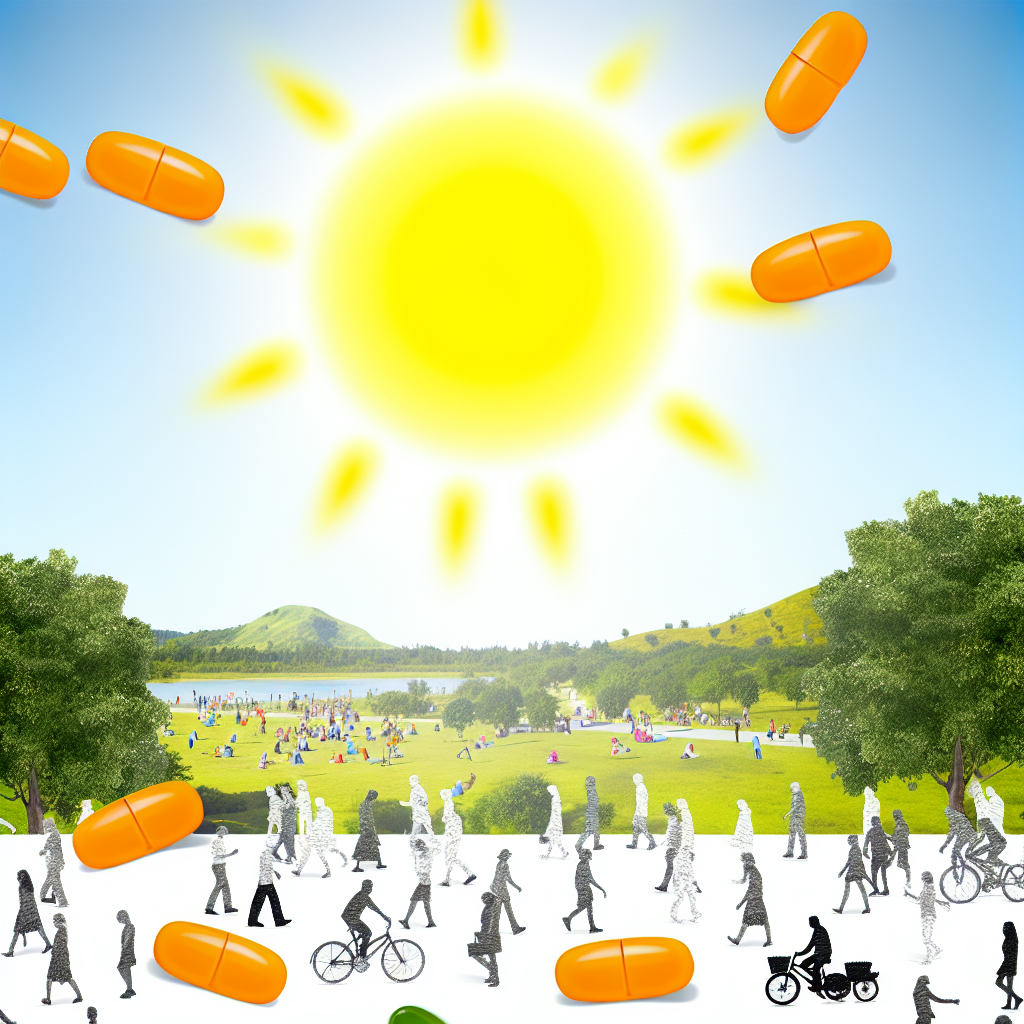Have you ever felt the sun on your skin and instantly felt a little brighter—like the world just makes a bit more sense? It turns out, sunlight isn’t just good for your mood; it’s essential for your health. Sunlight is the key to producing Vitamin D, often called the “sunshine vitamin,” a critical nutrient for strong bones, a healthy immune system, and a happier state of mind.
In today’s indoor-focused world, many of us aren’t getting enough sunlight to produce the Vitamin D we need. Let’s dive into how the sun helps create this vital nutrient, why your body depends on it, and how to ensure your Vitamin D levels remain healthy—even if your lifestyle or location limits sunlight exposure.
How Does Sunlight Help Produce Vitamin D?
Here’s the science: when your skin is exposed to sunlight—specifically UVB rays—it kickstarts a fascinating process. The UV light transforms a compound in your skin called 7-dehydrocholesterol into Vitamin D3. From there, Vitamin D3 is processed in your liver and kidneys to become an active form called calcitriol, which is ready for your body to use.
This sunlight-driven reaction makes Vitamin D unique among the essential nutrients. Unlike most vitamins that you get through food or supplements, sunlight is the primary driver of Vitamin D production in your body. Without enough sun exposure, your levels can drop, potentially leading to deficiency and health issues.
Why Is Vitamin D Important for Your Health?
Vitamin D is much more than just a “bone-strengthening” nutrient—it’s a multitasker that supports various aspects of your health. Here are its most significant benefits:
1. Strengthening Bones
Vitamin D plays a critical role in maintaining calcium and phosphorus levels in your bloodstream, which are essential for healthy bones. Without enough Vitamin D, your bones can become weak and brittle, increasing the risk of conditions like osteoporosis.
2. Boosting Immunity
Your immune system looks to Vitamin D for support. Adequate levels can strengthen your body’s defenses against infections and illnesses, from the common cold to more severe conditions.
3. Enhancing Mood and Mental Health
Ever felt a little brighter after spending time outside? Sun exposure activates Vitamin D production and stimulates serotonin, a mood-regulating hormone. This is particularly important for people prone to Seasonal Affective Disorder (SAD) during the darker winter months.
4. Preventing Chronic Conditions
While researchers are still studying its full potential, Vitamin D has been linked to a reduced risk of conditions such as heart disease, Type 2 diabetes, and certain cancers. Keeping your Vitamin D levels in balance may contribute to overall preventative care.
How Much Sunlight Do You Need for Vitamin D?
The amount of sunlight required to produce enough Vitamin D varies based on factors such as skin type, location, and the time of year. Here’s a breakdown:
Skin Type
If you have lighter skin, you’ll produce Vitamin D more efficiently because your skin has less melanin, a pigment that blocks UVB rays. For those with darker skin, getting enough Vitamin D may require more sunlight exposure due to higher melanin levels.
Geography and Seasons
Living near the equator is ideal for year-round Vitamin D production. However, if you live farther north or south, sunlight can become scarce during winter months, making supplementation or dietary changes more important.
Recommended Exposure
Experts suggest 10–30 minutes of direct sunlight a few times a week, preferably during midday when UVB rays are strongest. However, be cautious of overexposure to minimize risks like sunburn or skin damage. If you plan to be outside for an extended time, apply sunscreen after achieving your necessary exposure.
Alternatives to Sunlight for Vitamin D
If regular sunlight exposure isn’t realistic—whether due to weather, lifestyle, or skin sensitivity—you can still maintain healthy Vitamin D levels through diet and supplements.
Dietary Sources of Vitamin D
Add these Vitamin D-rich foods to your meals:
- Fatty fish (like salmon, tuna, and mackerel)
- Egg yolks
- Fortified products (such as milk, orange juice, or cereals)
- Mushrooms exposed to UV light
Using Supplements
Vitamin D supplements can be an effective option, particularly during winter or if you’re dealing with deficiency symptoms. Always consult with your doctor to determine the appropriate dosage, as excessive supplementation can have negative side effects.
Signs of Vitamin D Deficiency
A lack of sunlight or Vitamin D-rich foods can lead to deficiency. Keep an eye out for symptoms like:
- Fatigue or persistent low energy
- Bone pain or weakness
- Frequent illnesses or infections
- Mood swings, irritability, or depression
If you suspect you’re deficient, a simple blood test can help confirm your levels. From there, you can take steps to improve your diet, increase sun exposure, or consider supplements as needed.
The Bottom Line
Sunlight is much more than a feel-good moment; it’s a natural way to provide your body with Vitamin D, a nutrient essential for bone health, immunity, mood, and more. While spending time outdoors is the easiest way to boost levels, you can also incorporate Vitamin D-rich foods or supplements into your routine.
The best part? Maintaining healthy Vitamin D levels doesn’t have to be a hassle. Whether it’s a short walk in the sun or tweaking your diet, small changes can make a big difference. So go ahead—step outside, soak up the sunshine, and let nature work its magic.
